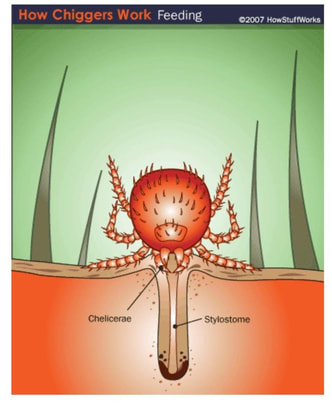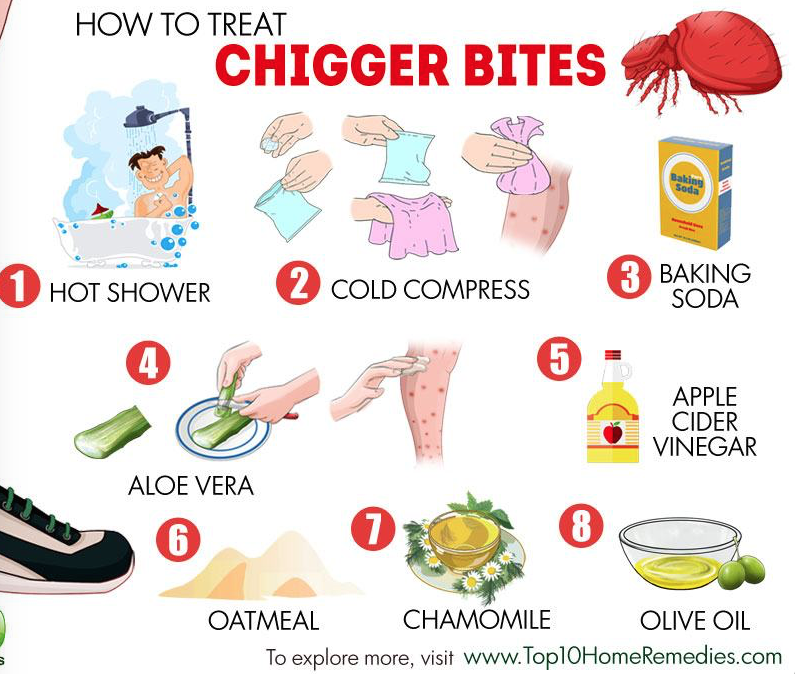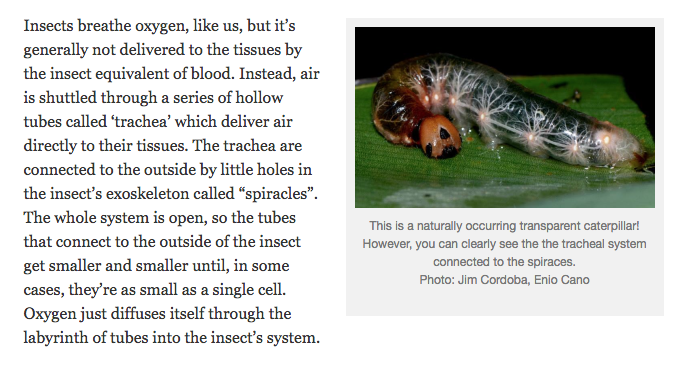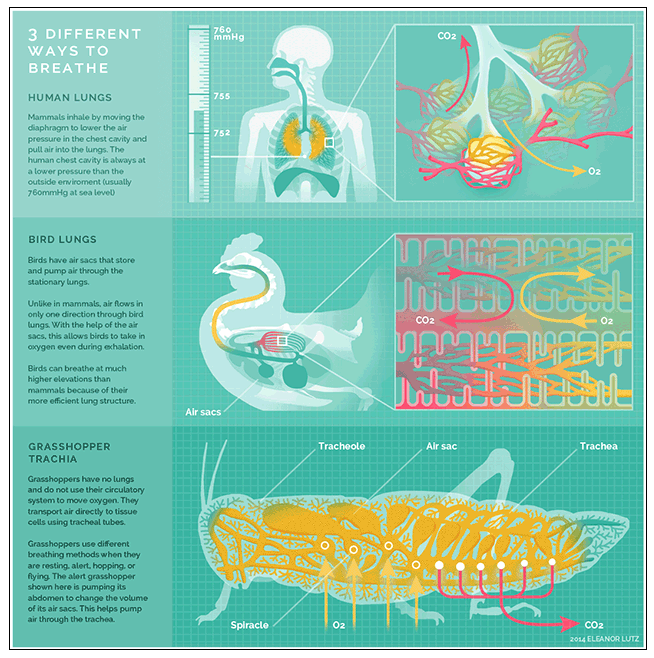Chiggers=Really Itchy Bites!
I wondered...spider or flea bites? or, ewwww, bedbugs?
My research led me to confirm a textbook case of chiggers and to the prolonged and continuing study of the most effective way to stop the confounded itching.
First, from Dragonfly Woman:
Unlike many blood feeding insects and their relatives the ticks, chiggers have very short mouthparts. Those little dangly bits at the front end of the chigger in the picture above are the chelicerae, their mouthparts. Now imagine the chigger in that photo shrunk down to a milimeter or a half milimeter in size, their actual size. Like I said – very short mouthparts! Chiggers don’t just eat the top layer of skin cells though – they go for the good stuff underneath. To do this, they pierce the skin with their chelicerae, then inject saliva to digest the tissue and expand the wound. The goop that is produced is slurped up by the chigger. Remarkably, they also inject compounds into the wound that cause an immune response in the host animal, one that hardens the tissue around the bite site. In essence, the hardened tube-shaped structure that forms (called a stylostome) is a straw that expands deeper and deeper into the host. The chigger injects more saliva and sucks up more liquified tissue as the stylostome gets longer and longer. That’s right! Chiggers have tiny mouthparts, but they use their host’s own immune system to enlarge their mouthparts into a stylet like those of mosquitoes or a beak like those found in the true bugs! Now if that isn’t amazing, I’m not sure what is.
So the chigger bites you, dissolves some of your tissue, and eats it. Big deal, right? Wrong! These tiny little creatures are capable of producing some truly awful allergic reactions. These aren’t the send you to the hospital, carry an epi-pen with you kind of response in most people. Instead you itch. You itch like you’ve never itched before. Some people get massive itchy welts. The itching is intense, so severe that people have been known to gouge welts out of their skin as they scratch and many people have reported that the pain of doing this and the ensuing scars are much easier to deal with than the itch of the bites. Now the itching wouldn’t be so bad if it were just a few bites, but most people don’t get that lucky. Instead they get tens or hundreds of bites from many individuals at one time (chiggers tend to be clustered together) that are located in inconvenient places (want to be observed scratching your armpit or your bra straps vigorously hundreds of times per day?) and don’t go away for 5-10 days. That’s right – these little tiny animals can cause massive itching for 10 days or longer! (Are you itchy yet?)
I am two weeks in and considering using the Swiss Army knife cure. Arghhhhh.









 RSS Feed
RSS Feed
